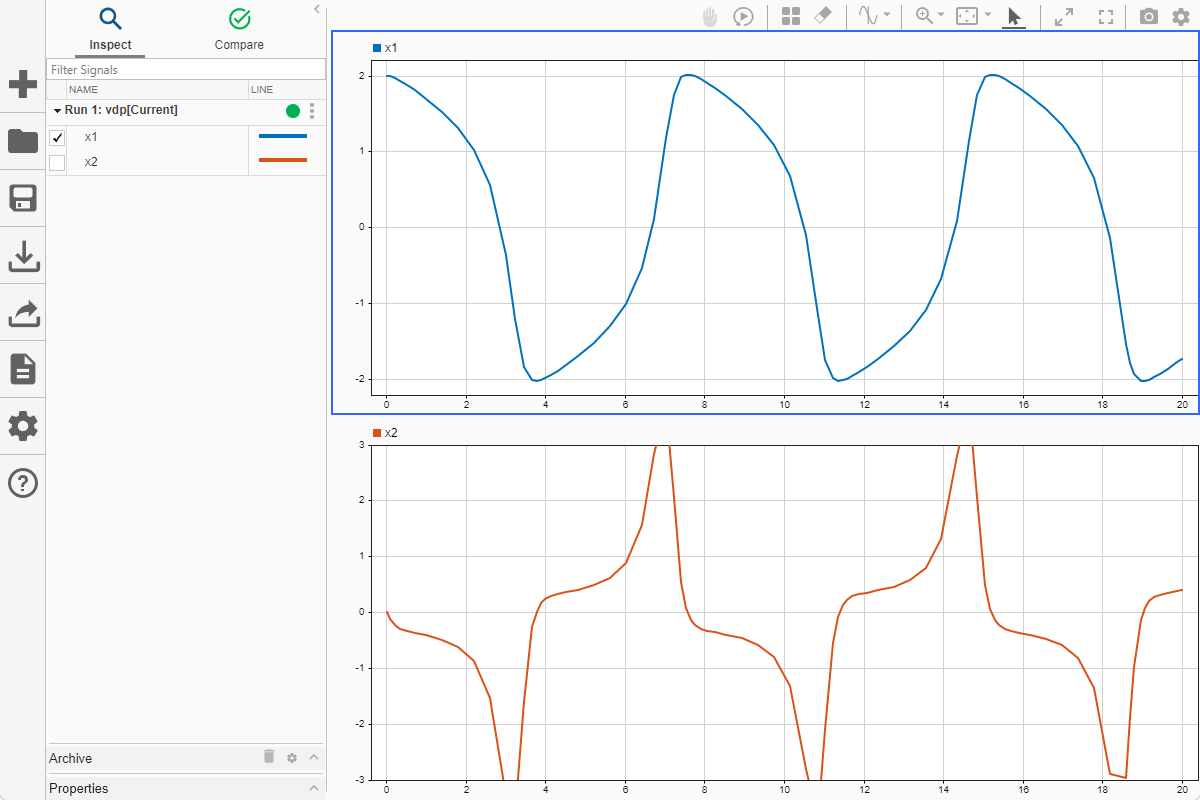Simulink.sdi.loadView
Load a view file to visualize data in the Simulation Data Inspector
Description
Simulink.sdi.loadView( applies the
visualization information in the view file, filename)filename, to the data in the
Simulation Data Inspector.
A view contains information about the layout and plots in the graphical viewing area as well as properties of plotted signals. When you load a view, the Simulation Data Inspector uses the properties and preferences in the file to display data currently in the Simulation Data Inspector. Signals in the Simulation Data Inspector align with the signals in the view according to these properties, in order:
Block path
Signal ID
Signal name
Aligned signals are plotted in the graphical viewing area. Use a view to apply a consistent set of visualization settings to multiple sets of similar data.
The view file includes the following information:
Subplot layout and visualization type
Settings for each visualization type in the layout
Signal selection mode
Replay controls visibility
Metadata displayed in the work area
Settings for signal grouping in the work area
Plotted signals and the line style and color for each plotted signal
A view file does not contain data. To load a session file that contains data and
visualization information, use the Simulink.sdi.load function.
Examples
Input Arguments
Version History
Introduced in R2019b

